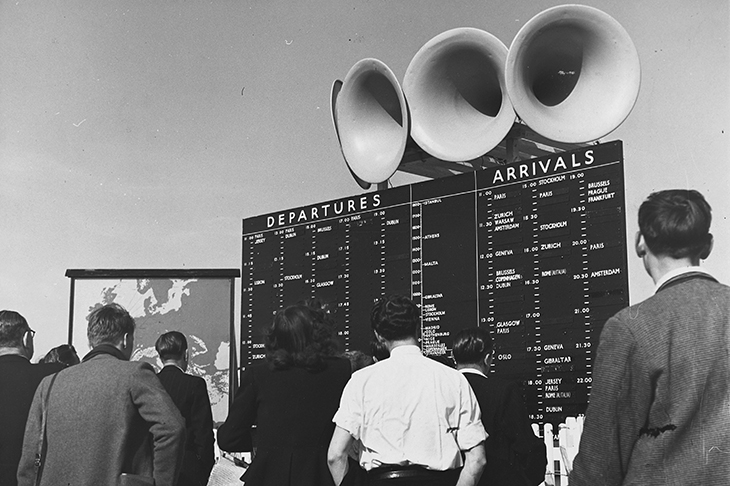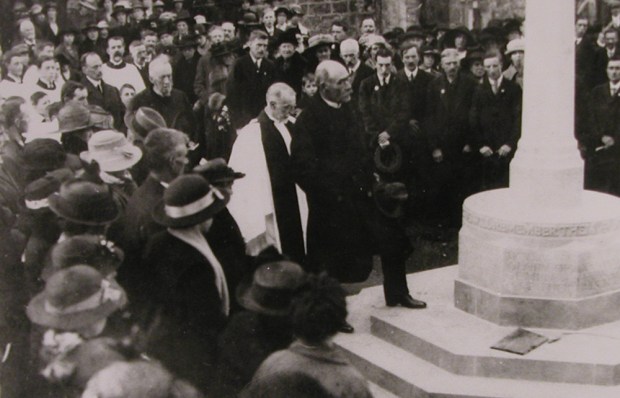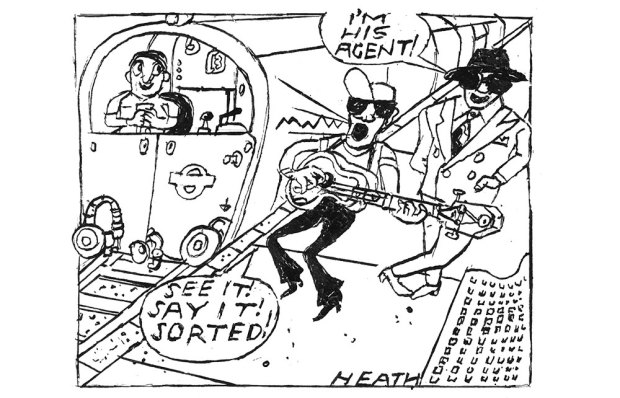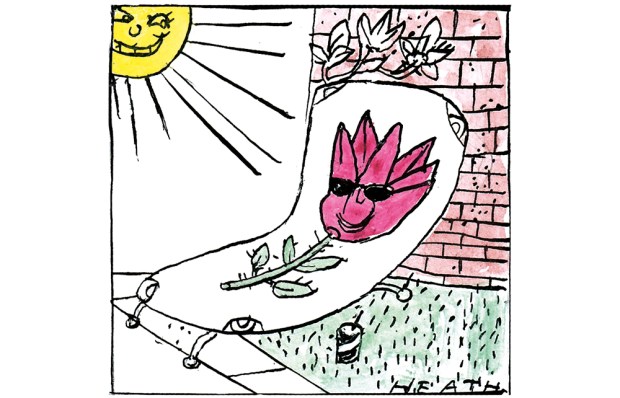At 6.50 p.m. on 31 August 1997 a plane touched down at Northolt Airport. It was a lamentable and dismal evening. Prince Charles, wretched and ghastly, accompanied the coffin that carried the body of his former wife Diana. Watching from the wings was Tony Blair. The nation mourned. And Northolt Airport did the job it has done so often — being the receiver of the great and the good and the bad, dead and alive.
As a boy I’d get on my bike and head down the road to Northolt Airport to watch the planes. Being from the suburbs, the airport held me in a grip. Friends’ parents recounted stories of dog-fights in the skies over Northolt during the second world
war and of a German plane being shot down by the glorious and brave Polish Spitfire pilots. One could almost see the handlebar moustaches and hear the muffled conversations in the mess.
These days people drive by the airport on the A40 on the way into London. The Spitfire by the front gate is a fibreglass replica of the original that was sold off. It’s hard to see because of a perimeter screen. Northolt is just a small airfield and its glory days seem long gone. But what glory days they were.
The airport opened in 1915 as the flying school for the Royal Flying Corp. Zeppelins were strafing London and we needed something up in the air to fight back. The airships inflicted staggering losses.
In the second world war, the airport took centre stage in defending London, and those magnificent Poles and their Spitfires were leading the way. The 303 Polish Fighter Squadron exacted nightly revenge, bringing down more Luftwaffe planes than any other squadron. They even had their own air ace, Josef Frantisek, who topped the table for kills. Churchill kept his personal aircraft at the base.
After the war many Poles stayed in the area, settling into professional lives. In my parents’ shop we became friends with them. I loved hearing stories of the war from those dignified and quiet Polish men. My father would make them a cup of tea and we’d listen to the tales of the night they shot down a German plane or lost a good friend. Whatever happened to them all? When we closed the shop we never got to see them again.
After the war, Northolt became London Airport while Heathrow was being built. You could walk through the front gate and board a BEA (British European Airways) flight to far-flung places. There are pictures of elegant women in fur coats checking in and preparing to travel. It’s the kind of scene that used to feature in Whicker’s World.
It’s not just the good and the glamorous who have come through Northolt. Ronnie Biggs landed here in 2001 all the way from his home in Brazil — a shadow of the dandy hardman of old, ready to hand himself in and die a decent death. He must have felt dread as he touched down. The game was up.
I’m from Northolt. I still love the airport. It is said that sometimes on a rainy night you can still hear a Spitfire coming in to land.
Got something to add? Join the discussion and comment below.
Get 10 issues for just $10
Subscribe to The Spectator Australia today for the next 10 magazine issues, plus full online access, for just $10.
You might disagree with half of it, but you’ll enjoy reading all of it. Try your first month for free, then just $2 a week for the remainder of your first year.














Comments
Don't miss out
Join the conversation with other Spectator Australia readers. Subscribe to leave a comment.
SUBSCRIBEAlready a subscriber? Log in